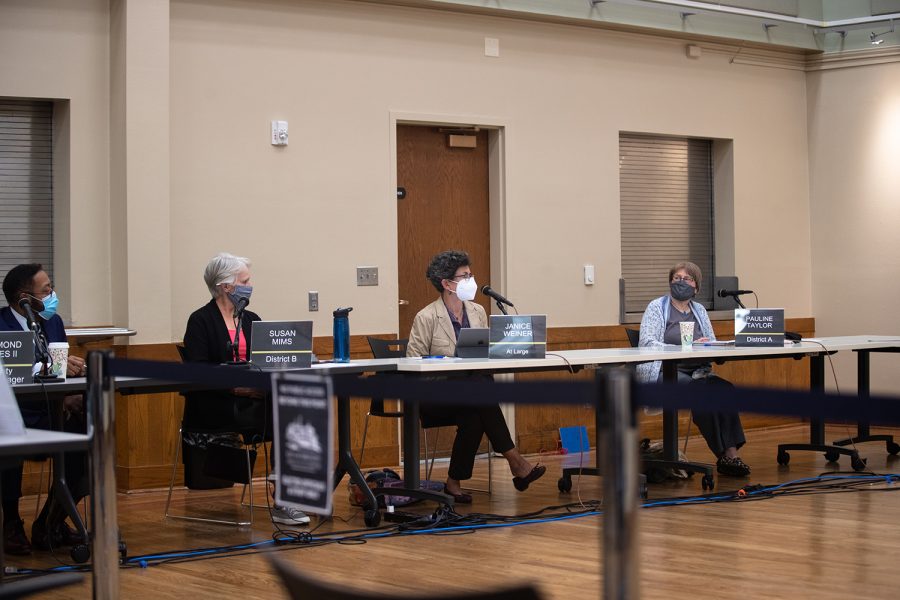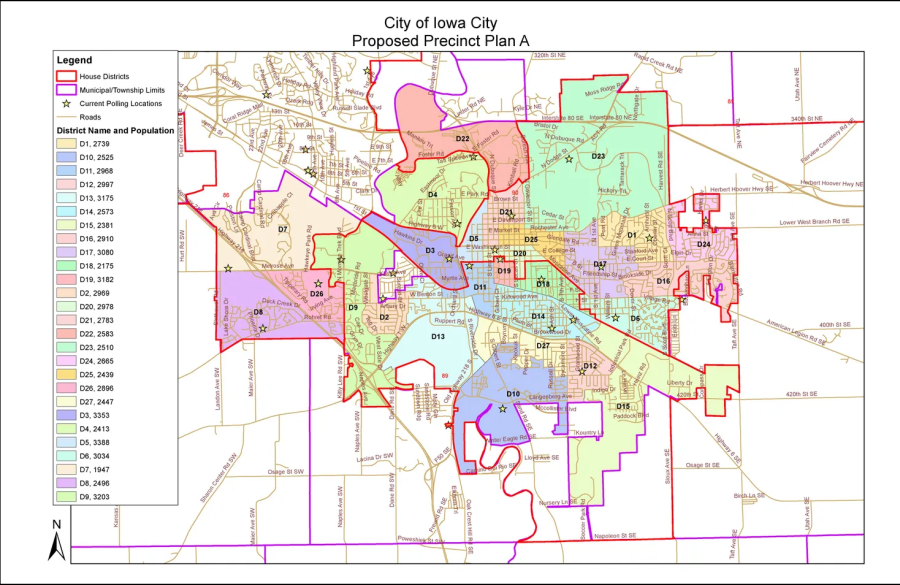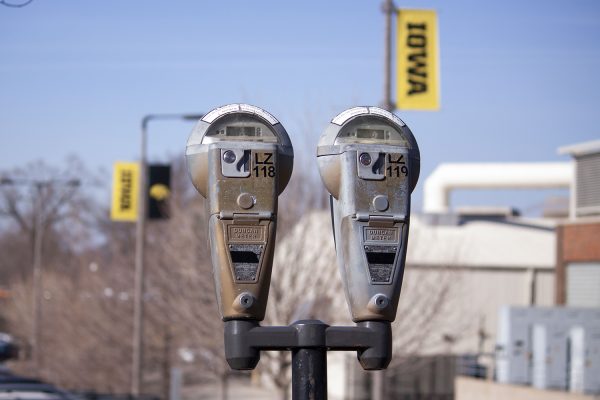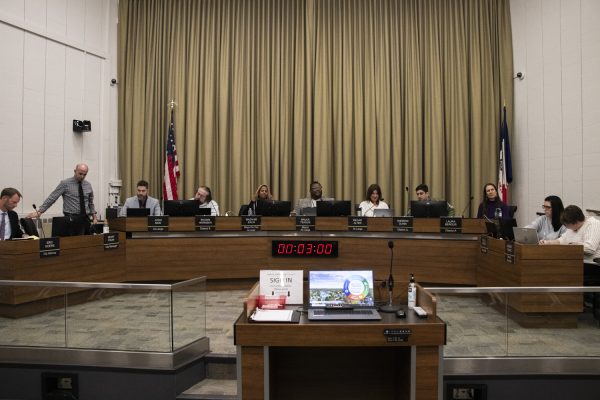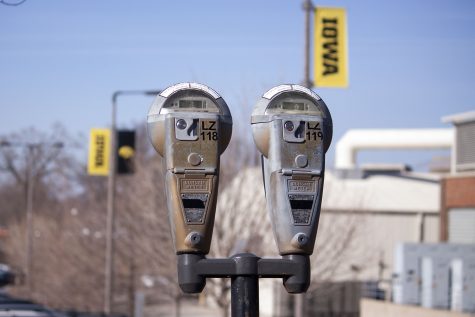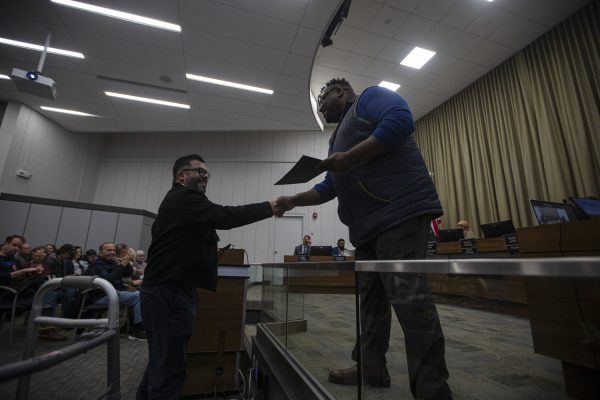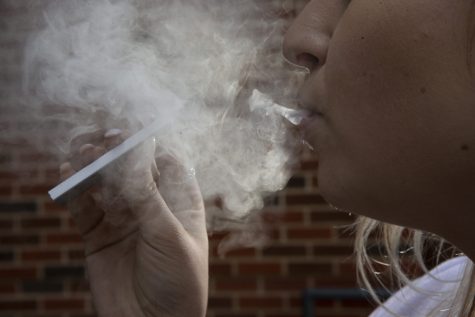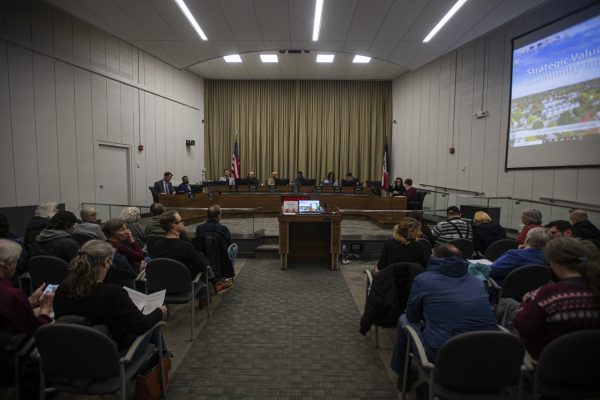Iowa City City Council to approve increased number of voting precincts
An increase in population resulted in Iowa City adding three more precincts. The Iowa City City Council is on a tight timeline to get a map approved by Jan. 3. This map will determine where Iowa City residents can vote in the next decade.
At Large Janice Weiner speaks at the Iowa City City Council Meeting at the Senior Center Tuesday, Oct. 19, 2021.
December 6, 2021
Iowa City residents can expect a change in their voting locations, as the city plans to introduce three precinct maps.
The maps to determine where Iowa City residents will vote for the next decade, or their precincts, will be discussed on Tuesday by the Iowa City City Council at the Iowa City Senior Center, and finalized in January.
“It’s a process that’s required by law to happen every 10 years,” Travis Weipert, Johnson County auditor, said. “I think the biggest thing, when it comes to the reprecincting, is the fact that we want to make sure we keep the population under around 3,000. Because we don’t want to see somebody in line for an hour.”
The Johnson County Auditor’s office is proposing an increase in the number of precincts from 24 to 27 because no precinct can have more than 3,500 people in it, Iowa City City Attorney Eric Goers told the city council during its Nov. 30 meeting.
The Johnson County Auditor’s Office wrote in a memo that Iowa City districts 5,7,11,12 and 24 are over the 3,500 population limit.
An increase in precincts would make sure that come election days there is efficiency in the polls, Goers said.
“We thought it made the most sense to have an outside entity coming in with no dog in any fight, draw the maps,” Goers said at the meeting.
Iowa City residents do not have the final approval of a precinct map, Goers told the council. There will be an additional session on Dec 14. to hear from the public.
“It is you, as a council, who has the ultimate authority to approve it, but we do have to give them the opportunity to make written comments,” Goers said at the Nov. 30 meeting.
Once the city council approves a map, it would need to be sent to Iowa Secretary of State Paul Pate, who would sign off on the map.
Goers told the city council that he wants to make sure the city avoids any legal roadblocks as they encountered some the last time the city re-precinct. Ten years ago, when the city council was working on a precinct map, they encountered that there were mistakes in the legal description.
“They identified some errors, they [the state] sent it back to us, and the city council had to approve some corrections and so forth. But hopefully, we’ll avoid that step,” Goers said.
To make sure there was an equitable number of precincts, the county increased from 24 to 27 to reflect the number of city council districts, Alex Stanton, Johnson County election technician, said.
“The maps were drawn. We basically had three different people in our office draw the maps, and each one kind of took a different route in what they were using,” Stanton said.
The three goals that the staff wanted to accomplish was compactness, population balance, and proximity to polling places, Stanton said.
Johnson County Deputy Auditor Mark Kistler said the auditor’s office had many individuals working on the process.
“We had several individuals working with different frame of mind and how to create these, so that we would have some variation to give the council to look at once the work was done,” Kistler said.



